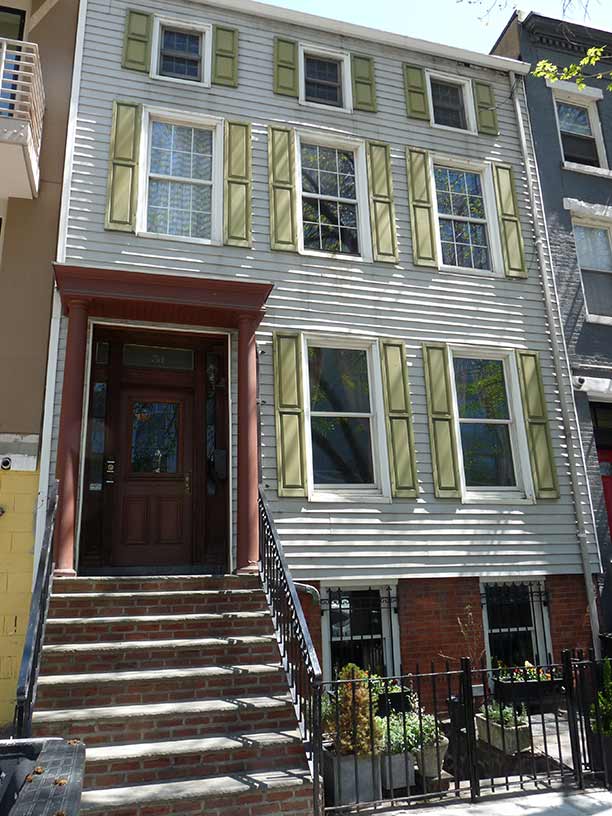
CONCORD Street and Duffield Streets are a pair of Brooklyn streets that can’t be neatly fitted into a neighborhood. They are too far east to be in Brooklyn Heights, too far south to be in DUMBO, too far west to be in Fort Greene, and too far north, really, to be part of Downtown the way, say, Fulton and Livingston Streets are. For the first century or so of its existence, they didn’t need to belong to a neighborhood; this was just a part of Brooklyn Village and later, a part of the City of Brooklyn. All this changed in 1898 when Brooklyn narrowly voted to become the Borough of Brooklyn in Greater New York. Concord and a short stretch of Duffield represent a diminutive oasis of residential buildings representing Brooklyn the way it must have looked like in 1895, when all the surrounding streets were residential.
Duffield Street is one of two streets in Brooklyn to end in -ffield. The other one is Sheffield Avenue in East New York. It was named for Revolution-era Brooklyn Village surgeon John Duffield; a long-vanished parallel street, Barbarin Street, was also named for a doctor. A group of buildings at 225, 231, 235, 223, 227 and 233 Duffield near Fulton Street are believed to date to the Civil War era and are further believed by their owners to be former homes of abolitionists, if not stops on the Underground Railroad, as was the nearby 1846 First Free Congregational Church, later the African Wesleyan Methodist Episcopal Church on Bridge Street south of Johnson Street in MetroTech Center.
The block of Duffield running between Concord and Tillary Street retains a great deal of Bridge Plaza’s remaining private dwellings. One of these is #51 Duffield, likely the oldest building on the block. The owner, a Forgotten NY fan, was outside and tipped me that it was the subject of an article on Brownstoner by Montrose Morris which says it’s a Federal style house with Greek Revival stylings that likely dates to the 1840s. Note the smaller windows and shutters on the third floor. There was an outbreak of smallpox in the building in 1902 but we assume that, by now, things are pretty safe.
Note: the exterior has been renovated since this photo was taken.
More from Bridge Plaza and Duffield Street
As always, “comment…as you see fit.” I earn a small payment when you click on any ad on the site. Take a look at the new JOBS link in the red toolbar at the top of the page on the desktop version, as I also get a small payment when you view a job via that link.
11/4/23


1 comment
I didnt know they had fake window shutters in the 1840s